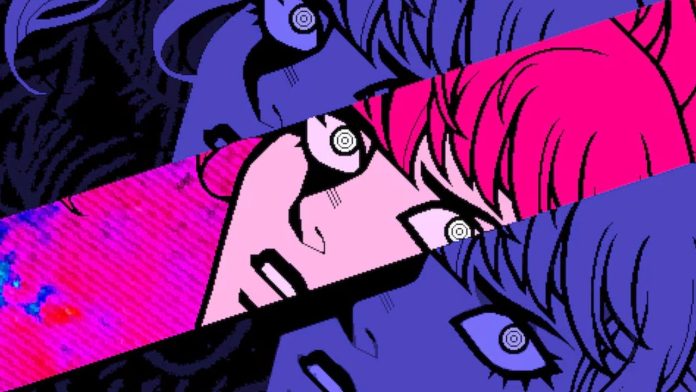
Demonschool is a tactical RPG that follows a demon hunter named Faye and her collected companions as members of the Black Magic Club at a poorly-ranked university on a peculiar island by the same name.
The school element of Demonschool should be taken with a big grain of salt, as Faye and her group of weirdos find out for themselves after arriving on the island. They’re given an assignment each week that has little to do with education and everything to do with the mysteries of the university and the impending apocalypse. Characters can ‘study’ techniques to unlock equipable abilities for the squad, and there is a weekly quiz on the weekends. Outside of furthering the main plot, time is spent building relationships, pursuing side quests, and playing minigames at various locations around town.
Combat is suitably at the heart of gameplay and employs what developer Necrosoft Games describes as “new-style tactics”, which draws inspiration from the first two Persona games. Each battle begins with choosing your party, where you select which character goes in each starting slot. There are four slots available, and Faye always needs to be in the first. If the fight is connected to a personal quest, sometimes other characters are also locked into a slot.

During the planning phase, you can expend action points to navigate each character around the grid-based map. Moving into an enemy constitutes an attack, and different characters apply their own abilities, sometimes pushing enemies into those behind them or pulling and stunning enemies as they pass through.
There are eight action points available for use each round. The first time a character completes an action, they use only one point, and for each subsequent action they use an additional point. For example, it costs two action points for Faye’s second movement and three points for her third movement. The balance of point cost, character abilities, and positioning relative to enemies on the map makes for an engaging puzzle each time combat rolls around.
Throughout the planning phase, there’s plenty of room for trial and error. Moves can be rewound and characters can act in any order. Once the movements for the round are locked in, the action phase unfolds, showing all of the piecemeal movements and attacks in full concert with one another. It makes for a satisfying visual, with characters zipping through lines of enemies, activating combos, and sending fountains of blood into the air for each downed combatant. Any remaining enemies then make their moves and attacks before the start of the next round.

Successfully completed fights are graded as an A, B, or C and confer a corresponding amount of opals (the in-game currency), trophies, and class credits. In order to get a top mark, you need to kill a certain number of demons within the specified number of rounds and get at least one character to the back end of the map to seal the portal. If a team member dies or if you don’t meet the round goal, the grade for the combat goes down. The range of successful outcomes is nice, since a perfectionist player can aim for As, but imperfectly executed bouts don’t stop you from proceeding forward in the game.
The sheer amount of combat in Demonschool does mean that fighting becomes a little tedious at times. Especially in the early game when you only have access to a few characters and abilities, getting through fight after fight against the same demons feels like a slog. Thankfully, the tactical complexity begins to build momentum after the first couple of in-game weeks when new enemy types grace the battlefield and new teammates join the club.
At the start of the game, Faye and Namako are the only two playable characters, followed shortly after by the first two additions to the Black Magic Club, Destin and Knute. A total of 15 characters can be recruited and utilised in combat by the end.

You can also build Faye’s relationship with the other club members by choosing dialogue options they approve of, singing karaoke with them, cooking them meals, and pursuing their side quests. Relationships are a secondary focus of the game, and Faye herself is irreverent and action-fixated. Still, the cast is varied and interesting enough to entertain.
Demonschool’s plot doesn’t take itself too seriously despite its penchant for horrifying scenarios. Character dialogue leans heavily on jokes and ’90s tech references, lending an air of levity to all the gore and death. The art style also seems referential to the era of its setting, but still manages to feel suitable for contemporary gaming. The majority of gameplay is from an isometric view, but the camera does occasionally pan to different angles for important scenes, showing off a mix of 2D and 3D art.
The soundtrack is chock-full of synthy beats that set the mood well. Sound effects punctuate everything from UI navigation to character interactions. There’s even a snazzy jingle for when time passes and a new day begins.

From a technical perspective, I didn’t experience any lag or issues while playing on Switch. There was a short loading time before the start of each battle, which was generally unobtrusive.
Conclusion
Demonschool is a lot of fun and provides a challenging, yet accessible strategic landscape. The mild horror elements pair well with the relaxed and somewhat goofy tone of the story, and the art style is well-suited to the late ’90s setting.
On the whole, Demonschool feels well-polished and thoughtfully constructed: a huge relief after the game’s multiple delays!







